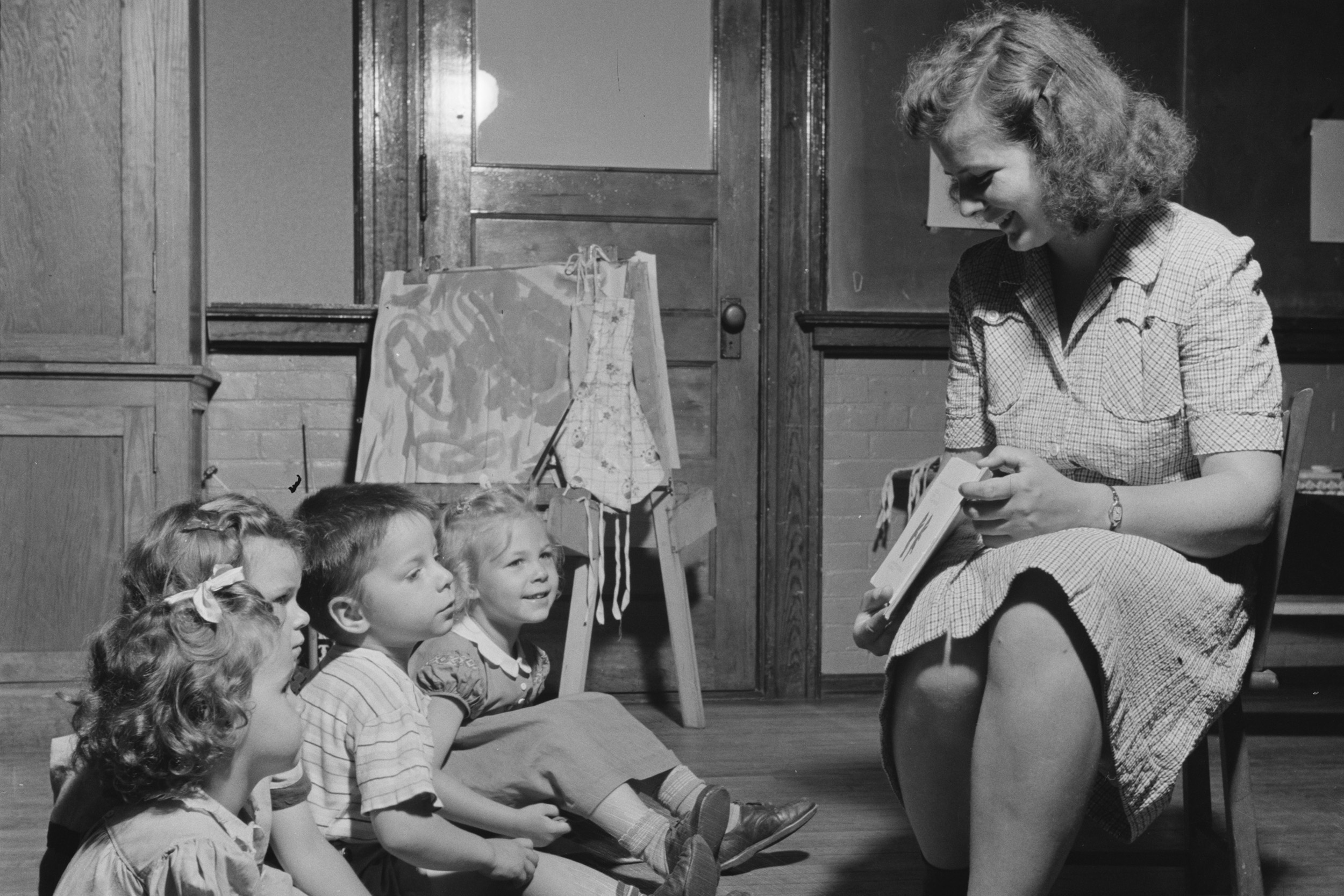As women continue to fight for gender equity in the workplace, a new paper co-authored by Nobel Prize economist Claudia Goldin on a World War II-era act used to support working mothers reveals what can be done with political will.
In “Mobilizing the Manpower of Mothers: Childcare under the Lanham Act in World War II,” the Henry Lee Professor of Economics examined the impact of this 1940 legislation, which was initially passed to finance infrastructure, but later funded childcare for working mothers.
As the National Bureau of Economic Research working paper explains, the Lanham Act created and supported both nurseries for preschool-age children and extended-hour services for schoolchildren. “This was a national, practically universal, federally funded preschool program,” said Goldin, the 2023 Noble laureate. “It is, to this day, the only one.” (The well-known Head Start program, she noted, is federally funded but focuses on low-income children and families so is much more limited in scope.)
“I love being an economic historian. I am a detective,” said Nobel Prize-winning study author Claudia Goldin.
File photo by Stephanie Mitchell/Harvard Staff Photographer
Conceived as a way to free additional labor that might be needed for the war effort, many of the so-called “Lanham nurseries” repurposed some Depression-era Works Progress Administration (WPA) nurseries for young children, utilizing an Emergency Relief Appropriation Act that authorized “not less than $6 million” for this purpose. (President Franklin Delano Roosevelt added an additional $400,000 from another emergency fund, with more appropriations approved in 1943, putting the overall federal outlay at nearly $52 million from 1943-46.)
But while the WPA nurseries were designed to help children of low-income and unemployed parents, the Lanham nurseries aimed at helping working mothers with children ages 2 to 11.
In addition to year-round supervision, these nurseries and the extended care also provided education and, at most of the nurseries, nutritionist-devised meals.
“We know that from Gallup polls of the era that practically no one thought that it was a good idea to employ women with preschool children,” said Goldin. “There was a lot of negative sentiment about that.”
But as the war progressed with no end in sight, mothers were viewed as an essential resource to keep many industries going as well as to contribute directly to the war effort while men went off to fight. These efforts included producing supplies as well as munitions or armaments manufacturing.
“The contracts for goods and services increased enormously” as the law went into effect, said Goldin, who analyzed some 191,000 federal contracts from this period.
What Goldin and co-authors Joseph Ferrie of Northwestern University and Claudia Olivetti of Dartmouth College found was that while the act did free up labor, much of its benefit went to women who were already working.
In the wake of the Great Depression, Goldin said, women sought higher-wage jobs at defense contractors and in textile factories of the South, which, at that time, were primarily available to white women.
Women, said Goldin, “were greatly attracted by the sudden increase in wages.”
The act, she said, unquestionably increased the labor force. However, “It was pretty clear that women were going into the labor force, whether they had kids or not, and whether they had preschool children or not,” she said. “Some of the nurseries were set up in 1942, but the vast bulk were set up in 1943 and ’44, and by then a lot of the employment in these places was pretty high.
While the act did free up labor, much of its benefit went to women who were already working.
“We have data on federal contracts by town, and we also have where the Lanham money was going by town for some of the early years,” Goldin said.
Matched up with the 1940 Census, this data shows that the money, which was distributed to 685 towns by 1945, was primarily going to areas where many women had already been working. “We can see that that’s where the Lanham nurseries were opening. Not in the places necessarily with the greatest need, but in the places where women actually had a desire to find additional work.”
While this paper examines “how this program evolved and why it evolved the way it did,” that wasn’t the original impetus of the research, said Goldin.
The Nobel laureate’s original idea was to study the impact of the program on the nursery school children as adults, but the insufficiency of federal records giving exact locations of the nurseries proved challenging.
“We probably have right now the addresses of about half of them.” In the course of that research, however, Goldin and her co-authors realized uncovered information that could be used in the other project.
“I love being an economic historian. I am a detective,” she said.
While noting that the Lanham Act research is ongoing, she continues to discover new insights into the impact of this 1940 legislation. “It was really a very small program,” said Goldin. “But it had a large impact in some of the small towns.”
More like this
Get the best of the Gazette delivered to your inbox
By subscribing to this newsletter you’re agreeing to our privacy policy
Source link

